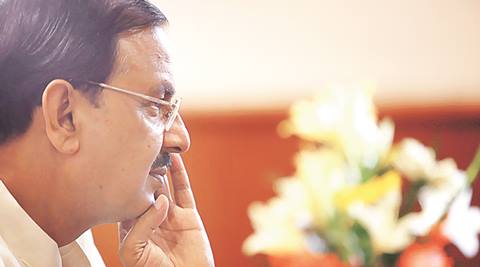Opinion Culture club
Grading creative people would replace one system of patronage with another.
 Dr. Mahesh Sharma, Minister of State for Culture (Independent Charge), Tourism (Independent Charge) and Civil Aviation, at his office in New Delhi on August 8th 2015. Express photo by Ravi Kanojia.
Dr. Mahesh Sharma, Minister of State for Culture (Independent Charge), Tourism (Independent Charge) and Civil Aviation, at his office in New Delhi on August 8th 2015. Express photo by Ravi Kanojia. In a laudable attempt to reach out to the last village, the ministry of culture has gathered over 1 crore biodatas of writers, artists and performers from all over the country. But the idea of grading these emissaries of Indian culture to festivals overseas into the categories of Outstanding, Promising and Waiting isn’t very promising. The innovation is designed to dismantle monopolies which certain artistes appear to enjoy, but erasing one system of patronage in favour of another is pretty pointless. Historically, the state has been the biggest patron of the arts, delivering infrastructure and funds but, at the same time, encouraging poetasters to sing their praises.
The ministry believes that bureaucrats make the least partial judges of artistic excellence. Certainly, one cannot be expected to be strongly opinionated about issues that one fails to grasp, but ignorance cannot be the basis of intelligent appraisal. Traditionally, creative people have been judged by their peers. It is not a foolproof system, but it creates consensuses which are broadly respected. For instance, everyone working in literature — writers, publishers and critics — knows which practitioners are of the first order. If they dominate festival contingents, it is because it is agreed that they are pre-eminent. Governments and bureaucracies should have the self-confidence to leave such appraisals to experts and practitioners.
The collective will of artistic communities is ideally expressed through autonomous bodies funded and furbished by the state, but held at arm’s length by the government. This is the role which the akademies were created to fulfil. To an extent, they have succeeded. For instance, the Sahitya Akademi maintains India’s biggest literary network. It is excellent for the ministry to reach out and make contact with once crore practitioners, but could Mahesh Sharma’s appointees and bureaucrats possibly have the understanding and expertise to tell gold from dross? This exercise looks like a throwback to the Indira Gandhi era, when cultural czars and czarinas were arbitrary arbiters of the fortunes of the creative community. The ministry of culture’s scheme will only create a new phalanx of czars, who differ from their predecessors chiefly on the count of political orientation. Almost all the arts depend upon state patronage to some extent. A government which seeks their development must not try to bind them in bureaucratic chains. It should, rather, muster the courage to let go. Unless, of course, it wants to turn culture into a propaganda machine.



